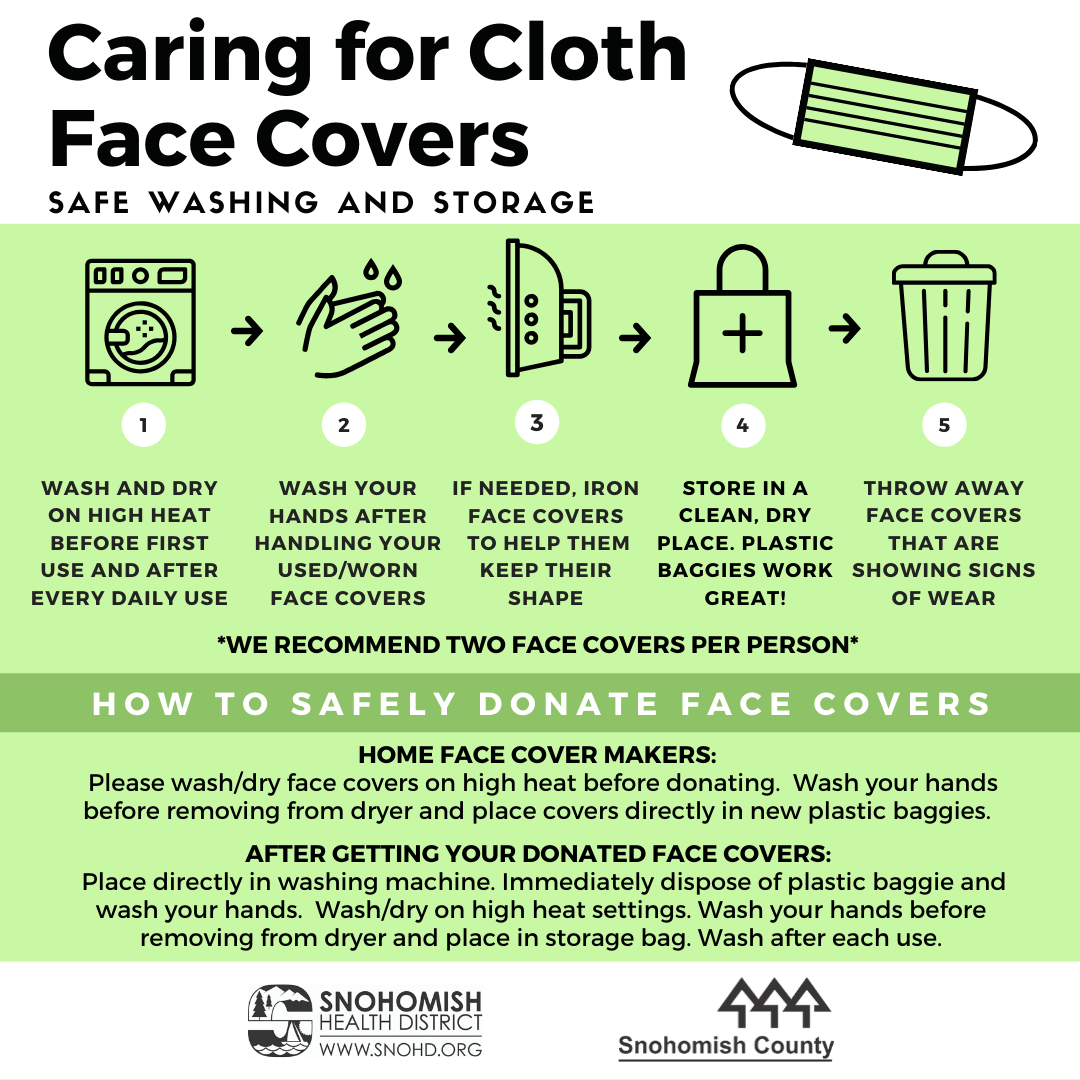The Volunteers of America (VOA), in partnership with local food banks, is stepping up to help coordinate community efforts to get homemade cloth face covers to people in need. Deliveries of face covers are now being accepted by VOA at 1230 Broadway, Everett.
Best Practices from the Snohomish Health District
Please follow the guidelines listed below. We are leveraging guidance from the Snohomish Health District on best practices for making, donating, and using face covers in Snohomish County during the COVID-19 pandemic.
The guidance details how face covers can help slow the spread of the disease. Makers and other volunteers also are being provided clear directions on how to sanitize and package face covers before distribution occurs.
The aim is to make the face covers available at area food banks AND for them to arrive in individually sealed plastic bags with an accompanying message explaining steps users should take before putting them on their faces.
Please use the attached graphic titled “Cloth Face Cover Instructions,” which can be printed, cut in half, and taped to the outside of bags containing donated face coverings, or otherwise made available at the same location where people pick up donated face covers.
This effort to help keep people safe in Snohomish County is being undertaken in partnership with area cities. Attached please find text and graphics the cities will be encouraged to use in messaging to makers in their community using social media and local websites.
Why wear a face cover:
When you are in a location where it is difficult to stay more than six feet apart, wearing a face cover can help reduce the likelihood that you are spreading COVID-19. You should still maintain distance as much as possible. While wearing a face cover, avoid touching your face. Wash your hands frequently. For safety reasons, children under the age of 2 should not wear a cloth cover.
Face covers can be made from any tightly woven, breathable, and washable material. They should fit over the area from the bridge of the nose to the chin, and from one cheek (past the corner of the mouth) to the other, with no gaps when the person moves or speaks. The CDC has guidance on how to properly make a cloth face cover.
Instructions for people making covers:
- After you finish making cloth face covers, put them in the washing machine and wash with hot water and detergent.
- Wash your hands thoroughly. Transfer covers from washer to dryer. Dry on high heat.
- Once the covers are dry, put on your own face cover and thoroughly wash your hands again – at least 20 seconds of scrubbing all over your hands with soap and warm, running water – before you remove the cloth face covers from the dryer. Place them directly from the dryer into a re-sealable plastic bag.
- Seal the bag and do not open it. Deliver the sealed bag to your local food bank or other location designated by your city for drop-off. A map with food bank locations and info is available at https://tinyurl.com/SnoCoCOVIDHUB.
How to Care for Cloth Face Covers
You should pick up the cloth face covers in a resealable plastic bag during regular distribution hours at your local food bank. Once you have the covers, wash them using hot water and detergent, or hand wash with hot water if a washing machine isn’t available.
- Wash your hands after handling the face covers.
- Dry the covers on high heat or leave in a warm, dry place until they are no longer damp. You can iron them to help keep their shape.
- When not in use, store cloth face covers in a clean, dry place. A re-sealable bag or container works great.
- Be sure to wash and dry the covers after each use. We recommend having at least two per person so one can be used while the other is being washed.
- Once a cloth face cover is showing signs of wear or is no longer holding shape to securely cover the mouth and nose, throw it away.






